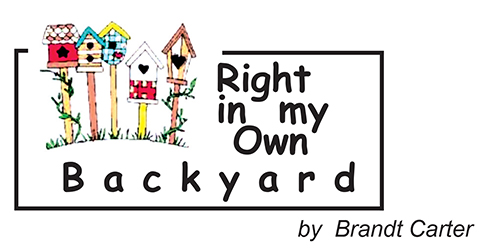
|
Broad Ripple Random Ripplings

The news from Broad Ripple
Brought to you by The Broad Ripple Gazette
(Delivering the news since 2004, every two weeks)

|
| Brought to you by: |

|

|

|

|

|

|
Converted from paper version of the Broad Ripple Gazette (v08n13)
Right in my Own Backyard - Let the Fireworks Begin - by Brandt Carter
posted: Jun. 24, 2011

Let the Fireworks Begin
July means fireworks. The "oohs" and "aahs" of crowds gathering to watch aerial extravaganzas, whether set to music or not, are irrepressible as the night sky fills with these great distractions from the summer heat.
Celebrating events with fireworks is a centuries-old practice. We have the Chinese to thank for inventing the creative pyrotechnic art form thousands of years ago. History maintains that around 200 B.C. someone in China threw a piece of bamboo into a fire, causing an explosion. Thus began a quest to harness the explosive phenomenon. Between 600-900 A.D., tinkers invented gunpowder, and the art of fireworks followed. In the 15th and 16th centuries, Italians became known for making aerial shell fireworks that exploded into bursts of gold and silver sparks. As early as the 1600s, there is mention of fireworks in the Americas. One year after the signing of the Declaration of Independence, the First Independence Day celebration included fireworks in 1777. Thus was born a tradition that remains strong today.
Fireworks have a natural way of bringing people together. From backyard barbecues to city-wide celebrations and from a handful of explosives to hour-long displays, fireworks stir the spirit of their audiences. Even the most cynical among us can become captivated by the spectacle.
Having long wondered about what names different pyrotechnic explosives might have, I recently did research. Here are a few that may help you identify fireworks at the next display you see. Peony, the most common shell type, is a spherical break of colored stars that burn without a tail effect. Chrysanthemum is a spherical break with a colored starburst, its stars leaving a visible trail of sparks. Dahlia breaks round and then has stars that travel a longer distance from the shell-break before burning out. Some dahlia shells are cylindrical rather than spherical to allow for larger stars. Willow is similar to a chrysanthemum but has long-burning silver or gold stars that spread like a weeping willow.
Palm bursts with a few large comet stars and a thick, rising tail (like a tree trunk) so that the display suggests a palm tree. Sometimes color is inserted inside the palm burst to simulate coconuts. Ring, a shell exploding into a circular form, can feature faces, hearts, and clovers. Diadem is a type of Peony or Chrysanthemum with a center cluster of non-moving stars, normally with a contrasting color or effect. Kamuro looks like a boy's haircut - a dense burst of glittering silver or gold stars that leaves a heavy glitter trail. Crossette is a shell containing several large stars that travel a short distance before breaking apart into smaller stars.
My heart flutters when the sound explosives are fired be they Bangs that mimic gunshots or the Crackle, Hummer, and Whistle, which are created by the resonance of gas. All these seem to find their way into Ravenswood, Downtown Indy, and Ft. Harrison displays. Then there is our neighborhood. We are surrounded by backyard celebrations. We don't do fireworks because our dogs high-tail it to the closets and shake until there is at least an hour of silence. Note: It is wise to sequester dogs during fireworks. Many run in fear when subjected to the booms, hisses, and whirls of fireworks.
So now that fireworks season is upon us, enjoy, enjoy! Take to the outdoors and "ooh" and "ahh" with the best of them.
Brandt Carter, artist, herbalist, and naturalist, owns Backyard Birds at 2374 E. 54th Street. Visit her web site www.feedbackyardbirds.com. Email your bird questions to Brandt@BroadRippleGazette.com
brandt@broadripplegazette.com

|

|

|
| Brought to you by: |

|

|

|
| Brought to you by: |

|

|

|
| Brought to you by: |

|

|

|
| Brought to you by: |


